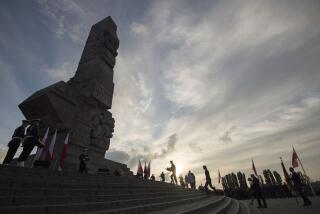20,000 March as ‘Bloody Sunday’ Is Remembered
- Share via
LONDONDERRY, Northern Ireland — Twenty-five years after British troops gunned down 14 Roman Catholic demonstrators, more than 20,000 marchers and political leaders called for justice Sunday in a display of anger and grief.
The Jan. 30, 1972, killings at the end of a civil rights march here came to be known as “Bloody Sunday” and galvanized Catholic support for the Irish Republican Army like no other event in the Northern Ireland conflict.
As police in armored cars observed and videotaped from a discreet distance, the crowd marched with 14 white crosses through the Catholic Bogside district to the site of the massacre.
No soldier was ever prosecuted for the deaths. A British inquiry into the killings concluded that troops were justified in firing because some of the demonstrators may have been armed. Locals disputed that claim, saying the soldiers fired first and deliberately.
Demonstrators flanked the podium Sunday carrying 25-foot-high banners depicting each of the victims of “Bloody Sunday,” who included both IRA supporters and moderates.
At the rally, leaders of Sinn Fein, the IRA’s political wing, and Catholic moderates called for an international investigation into the bloodshed.
Sinn Fein deputy leader Martin McGuinness, who was 21 on “Bloody Sunday” and reputedly the IRA’s commander in the city, said that now “the road to peace is through justice.”
More to Read
Sign up for Essential California
The most important California stories and recommendations in your inbox every morning.
You may occasionally receive promotional content from the Los Angeles Times.













